


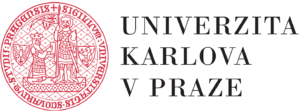
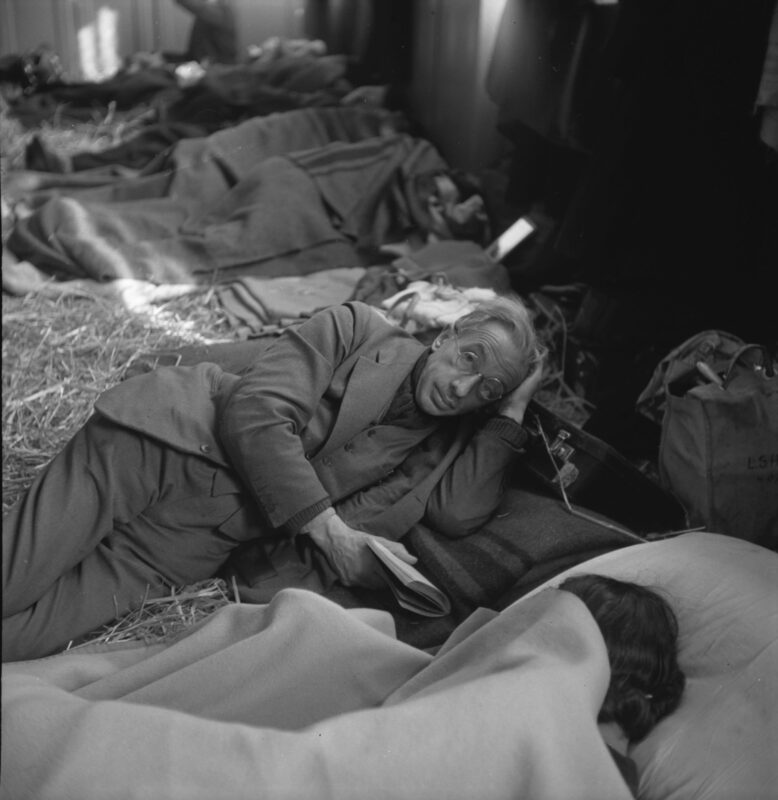
1 Ausgangslage
In a few isolated cases, the final months of the Second World War saw successful efforts that rescued a few thousand Jews from the Nazi killing machine. On 5 February 1945, such a transport left Theresienstadt with 1200 inmates on board. Most of them were elderly, but there were also children among them. Those rescued came from Germany (including Austria), the Netherlands and Czechoslovakia. They reached Switzerland in the early hours of the morning on 7th February 1945 and were accommodated for a few days in what was then the Hadwig Primary School building in St. Gallen. After a few days, the liberated Jews were rehoused in refugee camps. Only a few of them were allowed to remain in Switzerland, as the country demanded that they should travel on as soon as possible as a matter of principle.
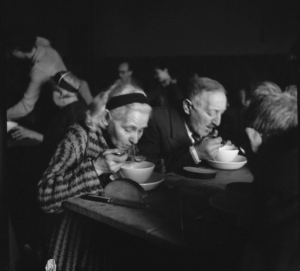
Liberated concentration camp inmate in the Hadwig school building, StadtASG_PA_Scheiwiller_Walter_05
Today, the Hadwig building is part of the campus of the Pedagogical University of St. Gallen (PHSG). The Specialist Unit for Democracy and Human Rights located there considers it its duty to remember the piece of world history that once played out in St. Gallen. This goal is shared by the Mamlock Foundation. Switzerland is expected also to have an interest in remembering this rescue mission, as well as the Czech Republic and Germany. For this reason, the Mamlock Foundation and the Centre have initiated the international research and public history project “The Train to Freedom”, in which the Freie Universität Berlin and Charles University in Prague are also involved as academic partners.
This operation must never be forgotten – nor, above all, the 1200 people who were freed.
The centre has carried out certain preliminary work in past years. In 2015, together with students, a smaller exhibition was put together in a project seminar. In addition, three master’s dissertations by students at the PHSG have looked into the individual histories of those involved. Now, much more in-depth and internationally coordinated research into the topic, whose results can be made accessible to the wider public, is desired, and should be taken on by the project. A short historical sketch of the operation and a brief contextualisation can be found using the QR codes linking to the documentation of the 2015 exhibition.
2. Goals
As the Shoah recedes in time, the importance of remembering it in the public sphere has in no way decreased. Rather, it has gained a pre-eminent function in supporting democracy in the face of growing extremist movements across Europe. As a fracture point in civilisation, the Shoah must never be forgotten, and antisemitism must always be opposed. For this reason, the research and public history project, set up to run over four years, has the goal of reaching out both to the broader public and, in particular, to school pupils, on the basis of the research carried out into the rescue operation. This will be achieved by making the results available on a website and creating local exhibitions and memorial sites not just in Switzerland but also in Germany and the Czech Republic; school pupils will be provided with teaching materials for incorporation in their respective school systems.
3. Structure
The overall project, set up to run for four years, is subdivided into a one-year pilot study and a three-year main phase.
3.1 Pilot study
The pilot study, to which one year is allotted, should ideally start in October 2021 and will cover the important preliminary work for further project implementation. The project partners will survey the available documentation on the operation within their own countries.
- Switzerland: Swiss Federal Archives, Archives of Contemporary History, archive of the (Swiss) Red Cross, cantonal archives, local archives.
- Germany: Bundesarchiv Berlin, Landesarchiv Berlin, Entschädigungsamt Berlin, ITS Bad Arolsen, local archives.
- Czech Republic: Terezín Memorial (in Theresienstadt) and Terezín Initiative Institute, national archive, Jewish Museum Prague, State Regional Archives Litoměřice, local archives.
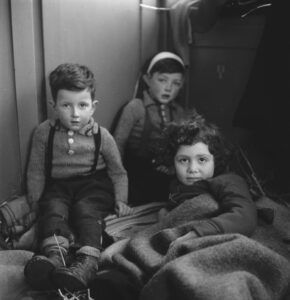
Children were also among those transported from the Theresienstadt concentration camp, StadtASG_PA_Scheiwiller_Walter_05
The documents created by the Swiss authorities for every refugee arriving in Switzerland during the Second World War are an excellent starting point for research and have been preserved in the Swiss Federal Archives. Such files thus also exist for the 1200 liberated prisoners of the Theresienstadt concentration camp. This extensive range of documents will be briefly perused and digitised. Responsibility for this laborious task, one fundamental to the project, is with the PHSG. Analysis by various criteria such as place of origin, date of deportation (if given), place of residence in Switzerland, return/onward migration or continued residence in Switzerland will make it possible to determine individual stories for future stages, which are of particular relevance given the multi-national view the project is taking of the rescue operation. Individual histories will be very important for the website, the teaching materials and the exhibitions.
The selection of these stories will be the starting point for project-like seminars at each university involved. In this way, students will be integrated in a central capacity within the pilot study. Participants in the seminars will meet with the project team in late summer/autumn 2022 at a summer school and discuss their findings in more depth. At the same time, during the week, they will visit all the sites and get to know the authentic sites of remembrance.
3.2 Main phase
In the main phase of the project, set to run for three years, historical research will take place into the rescue operation, the website will be created and teaching materials implemented. The various exhibitions will also be conceived. Their physical implementation may take longer, depending on site-specific factors.
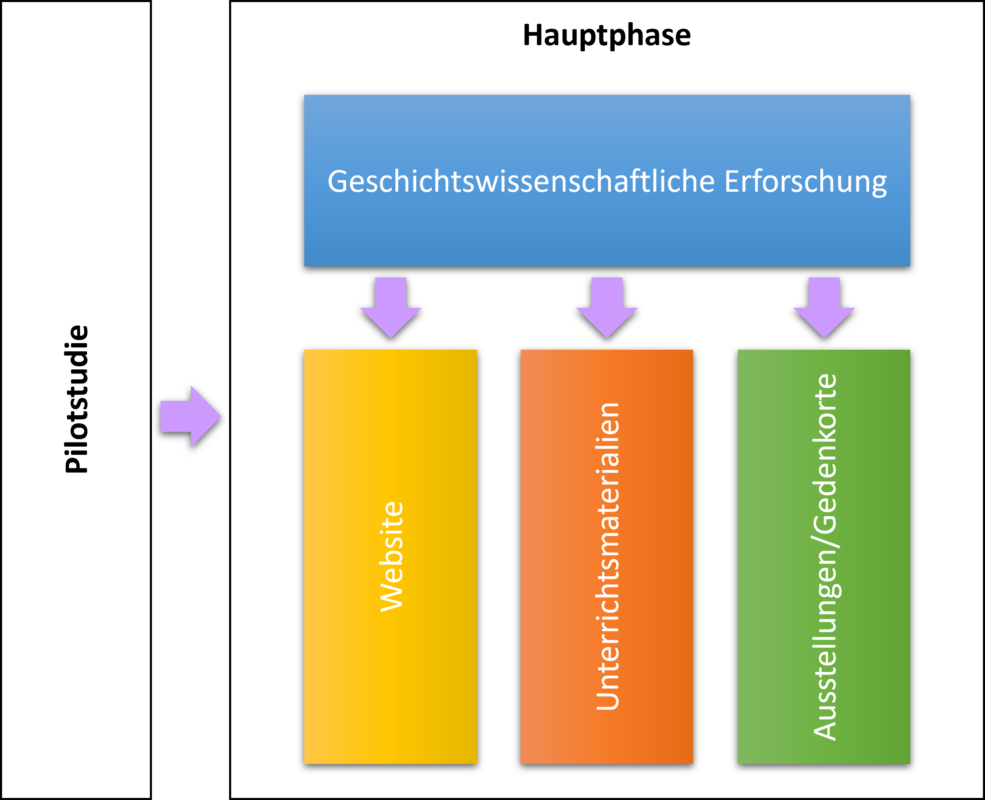
Project structure
4. Products
4.1 Website
The multilingual website is the unifying product of the project as a whole. It will be created in the Czech Republic and maintained over the long term. It will combine the findings from the topics researched with aspects of a (virtual) site of remembrance and a platform for teachers. The technical implementation and website maintenance will be carried out by the renowned “Malach Center for Visual History” at the Charles University in Prague. In terms of content, the main focuses are the negotiations and intent behind the rescue action, how the transport was put together in Theresienstadt, the route, the journey itself, the arrival of the liberated prisoners and their accommodation in Switzerland, from so-called “disinfection” to quarantine and refugee camps and their “life after survival”. The individual stories researched and characterisation of the various groups represented by the liberated Jewish prisoners will deepen the understanding of these topics and illustrate them. Also of interest are the deportations to Theresienstadt and the different groups of perpetrators involved.
4.2 Teaching material
Together with the planned exhibitions, which can also be understood as part of a campaign to inform the public about history, the teaching materials to be drawn up have central importance to the dissemination of the results within society. These materials will be drawn up for three countries, based on the results of the research. Through the lens of the rescue operation and its contextualisation, it will be possible to explore many areas within the overarching fields of “Holocaust education”, “the history of Nazism” and “the Second World War” in schools. Beyond transmitting this knowledge gained, the materials will be directed towards promoting competences in the field of democracy promotion/political education. The teaching materials will create specific links to each national curriculum, making sure they can be used by teaching staff. Looking at Switzerland, the focus is on areas that have gained in importance since the introduction of Lehrplan 21, but which can only be readily implemented with the production of new teaching materials. The teaching materials can be accessed via the website. The students involved at the pilot stage and, potentially, in other stages are an additional guarantee for the content researched by the project partners being integrated into university education. These students will also become important ambassadors for the project.
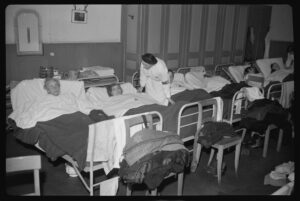
The liberated prisoners were often in a very weakened condition. StadtASG_PA_Scheiwiller_Walter_04
4.3 Exhibitions
Several exhibitions in the three countries involved in the project will explore the topic of the liberation of the 1200 prisoners of Theresienstadt, making the core focus of the project known to a broader public and thus promoting trans-national remembrance. An authentic site of remembrance can be found in the former Hadwig primary school which was used as a disinfection camp in 1945 and is now part of the Pedagogical University of St. Gallen. The building is currently and will continue to be used as an education facility. In front of the building, information boards will show the history of the site. Using QR-codes, visitors can access information on the website. This part of the exhibition is accessible even outside the building’s opening hours. Of high documentary value is a series of photos taken by Walter Scheiwiller at the start of February 1945 in the Hadwig building itself, showing the situation of the liberated prisoners in the requisitioned building (some of these photographs can be seen in this document). In the building itself, at locations that can be determined from the Scheiwiller photographs, information boards will be set up to illuminate specific aspects of the life of the refugees and the historical circumstances surrounding the operation. Here too, additional information will be provided by direct links to the website.
For the Czech Republic, the topic will be integrated in the exhibitions at the Terezín Memorial and along the route the transport took. In Germany too, information should be integrated into existing memorials or as independent memorial sites. Of relevance here is the “Gleis 17” memorial (at Grunewald station, Berlin).
5. Project partners
Two further partner institutions are involved in “The Train to Freedom”, a project initiated and coordinated by the Mamlock Foundation and the Specialist Unit for Democracy and Human Rights, the Freie Universität Berlin and Charles University in Prague. The three universities take principal responsibility for research and content development. The Mamlock Foundation, which has experience in memorial and remembrance projects, will support through fundraising, networking, contacting authorities and other stakeholders and handling administrative matters.
The project team in alphabetical order (contact details to be found below):
Johannes Gunzenreiner is a professor of history and political education and co-director of the Specialist Unit for Democracy and Human Rights at the Pedagogical University of St. Gallen and head of the Regional Didactic Centre in Gossau (Switzerland).
Kateřina Králová is an associate professor of contemporary European history and the Head of the Department of Russian and Eastern European Studies at Charles University, Prague. In her research she focuses on reconciliation with the Nazi past, post-conflict societies, the Holocaust, the Greek Civil War and historical migration.
Martin Lücke is a professor of history teaching at the Friedrich-Meinecke-Institut of the Freie Universität Berlin. Scientific head of the Margherita von Brentano Center for Gender Studies at the Freie Universität Berlin. Research focuses relating to the project: the Shoah and historical learning, empirical research into historical culture, public history.
Michael Mamlock has for many years been active as an independent entrepreneur. He has experience with project development in the medical/pharmaceutical field and real estate. For many years, he has simultaneously been the initiator of numerous projects dealing with National Socialism and the Shoah. He is a founding member of the Jewish Forum for Democracy and against Antisemitism (JFDA) within the Jewish community Berlin, set up in 2008. He is a founding member and the chair of the board of the Förderverein Jüdischer Friedhof Berlin-Weißensee e.V. (support association for the Jewish cemetery of Berlin-Weißensee). He is active in international fundraising and has taken part in numerous exhibitions and projects, e.g. the financing of the restoration of several gravesites within the Jewish cemetery of Berlin-Weißensee in the 1990s.
Mamlock Foundation – von Generation zu Generation – L’Dor Vador
c/o GF Johanna Neumann
Solinger Straße 09.a
D-10555 Berlin
mm@mamlock-foundation.com
Thomas Metzger is a professor of history and co-director of the Specialist Unit for Democracy and Human Rights at the Pedagogical University of St. Gallen. Research focuses relating to the project: cultural, social and ideological history of antisemitism, Swiss refugee history 1933-1945, history of Fascism.
Contact:
Pädagogische Hochschule St. Gallen
Notkerstrasse 27
9000 St. Gallen
thomas.metzger@phsg.ch



